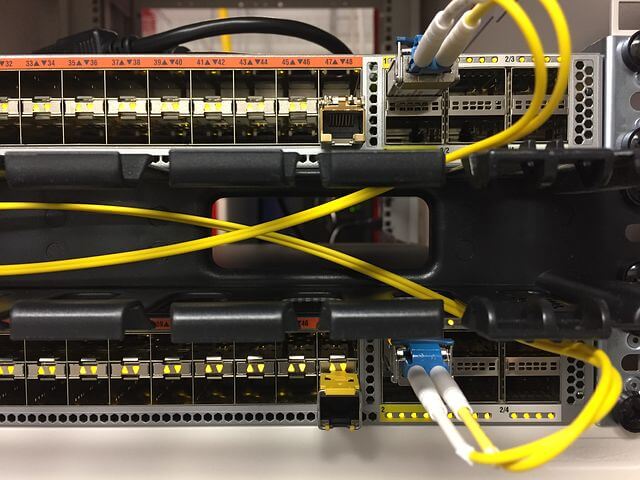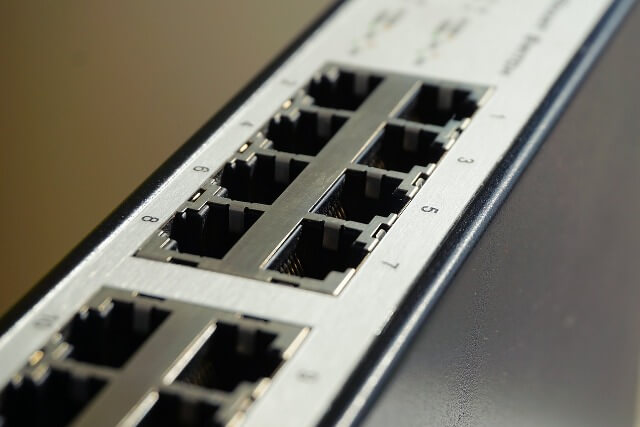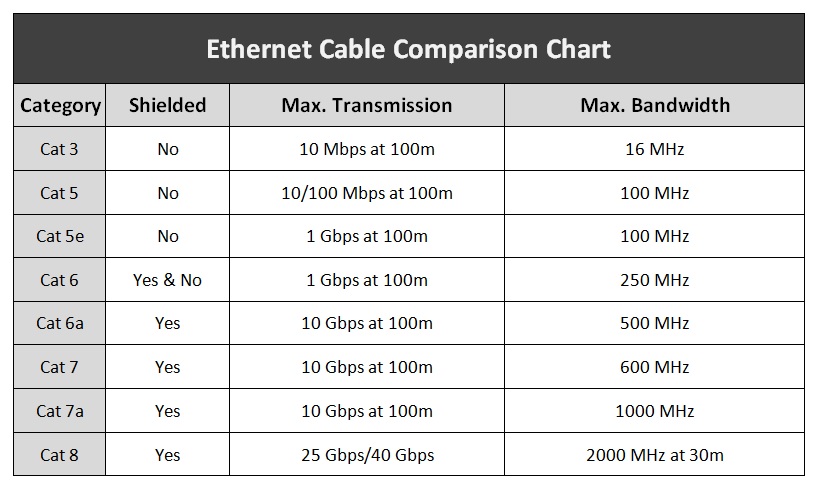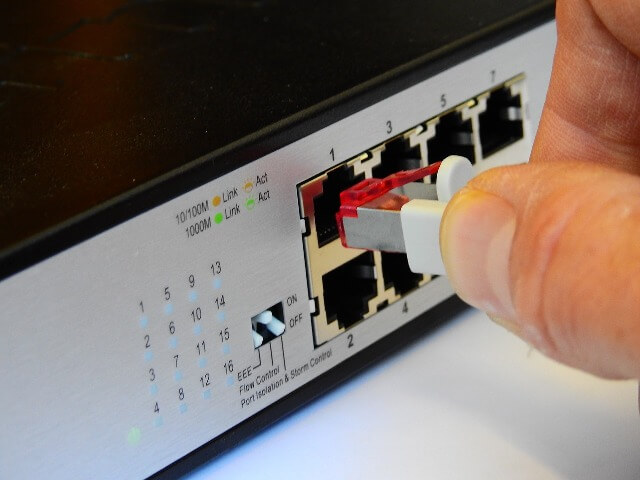The Ethernet switch is a key component used in your network, but do you know what it is, what it does, and which type is best suited to your business? Read on as we answer these important questions in easy to understand language. If you are looking for excellent advice about networking or need help in setting up your network, contact the experts at Network Telecom today.

Toll Free: 1-866-764-7866 || Email: [email protected]
The entire project was orchestrated with minimal telephone system down time, and the ongoing support we have received from them has been reliable and efficient.Angela B., THOMPSONS LIMITED
What Exactly Is an Ethernet Switch?
In order to fully understand what an Ethernet switch is, it will be helpful to give you a definition in conjunction with definitions for hubs, routers, and Ethernet Cables.
Ethernet Switch:
An Ethernet switch is a computer networking device that you can use to connect many devices together on a computer network. A switch is considered an “intelligent device” as it has software, allows connections to multiple devices, manages ports, and manages Virtual Local Area Network (VLAN) security settings.

Hub:
A hub on the other hand is a “passive” or “non intelligent” device and doesn’t have software to run it. It’s job is simply to connect a network of personal computers together and then the devices can exchange data between them.
Why Switches Replaced Hubs in Networking:
In the past, hubs were used instead of switches because they were much more economical to purchase. However, the cost of switches has dropped so much in recent years that the switch has basically replaced the hub.
*Tip: If you have an older network that still uses hubs and you find that it runs rather slowly, you will probably find that you can increase your speeds if you replace your hubs with switches.
Router:
A router is the brains of your network. Its job it to regulate network traffic and handle security.
A switch, on the other hand, is designed to pass traffic along your network as efficiently as possible without data collisions and interference. Your switch makes sure that your devices are strongly connected together by using packet switching and data transmission.

Ethernet Cables:
Ethernet cables are used to connect your devices such as your computers, routers and switches to your local area network (LAN) if your network is not a wireless one. There are different types of Ethernet cables, some that are better than others at carrying your data properly at greater distances.
The following chart will give you a general idea about the different cables available and their capabilities.

To learn more about the different Ethernet cables and their capabilities, check out our post called “Ethernet Cable Wiring Ontario.”
What Does an Ethernet Switch Do?
In the past data traveled on an Ethernet network using a system call CSMA/CD (Carrier-Sense, Multiple Access, with Collision Detect) . This was a shared system which meant that more than one machine was working on the same wire. Therefore, you had to wait your turn for your data signal to travel along the wire.
This is how the system worked:
- Step 1: The system “listened” to see if any other signal was using the wire.
- Step 2: If the wire was in use, the system would wait to send its data. When the wire was free, it would send its data.
- Step 3: Once the data was sent, it would check to make sure that the data actually arrived. If more than one device was trying to send data at the same time, a “collision” would occur and the data would need to be sent again.
Today, however, every device is connected to its own wire that attaches back directly to a switch which means that the possibility of collisions is greatly reduced. Switches have taken away the need to use CSMA/CD as you now have two different wires running data at the same time.
Running data at the same time is known as “Full-Duplex” . It is very similar to talking on a telephone where more than one person can talk at the same time; more than one device can send data at the same time in both directions on a single carrier.

Categories of Switches and What Types of Networks They Are Best Suited to
There are 3 basic categories of switches; they include:
Unmanaged Switches:
Unmanaged switches are the most cost effective. This type of switch usually cannot be modified or configured; you simply plug it in and let it work. If you require only basic switching and connectivity, as in you only need a few extra ports on your desk, in a lab, conference room, or at home; then this may be your best choice.
Lightly Managed of Smart/Web-Smart (S/SW) Switches:
Smart switches have been around for a while but they aren’t necessarily the “smartest” choice as they don’t offer the full range functionality that is available with Managed L2 Switches. They do, however, allow for more modifications than an unmanaged switch. This category of switches is the fastest changing and is a cost effective choice for smaller networks, less complex networks, or used on the edge of a large network with managed switches used in its core.

Managed Switches:
Managed switches allow you to be more precise in your configurations by allowing you to change almost every setting you want. They also offer the highest level of security but they cost the most. They are best used in very large networks or as core switches in relatively smaller networks.
An interesting analogy is to look at smart switches and managed switches like knives. The smart switch would be your average butter knife; it would get the job done but it’s not very versatile. The managed switch is more like a Swiss Army knife that gives you countless ways to use it. -Source
Benefits of Recent Ethernet Switch Advances
Ethernet switches play an important role in the development of time sensitive networks (TSN), networks that need to run quickly and smoothly.
TSN is growing in importance in industrial automation because of the increase in interest in Ilot (Industrial Internet of Things). The things that IloT refers to in an industrial setting would include the use of sensors and wireless to allow monitoring of devices like “pumps, motors, steam traps, heat exchangers, valves and piping systems.”
All of these devices have mission-critical, time-sensitive information where data has to be transferred and shared within a very narrow window of time, without a delay in the network. Enhancements in Industrial Ethernet can give industries the reliability and faster transfer of data necessary to run these applications.

Network Telecom: Business Phone System Experts
You can trust Network Telecom to offer your business expert advice and answer any questions you may have when it comes to Ethernet networks, cabling, cloud technologies, and telecommunications . Our team of experts is here to help.

At Network Telecom, we understand that it is absolutely necessary for your business to have a dependable and uninterrupted communications system at all times. That is why when you contact us for technical support, we will be there for you, any time, day or night. You can count on us. In addition, we provide you with same day parts, labour, and service.
In addition to our accredited and certified technical expertise, we offer:
- Consultative Sales
- Cloud Services
- Ongoing Support
- System Design + Consulting
- System Admin + User Training
- PA Systems
- VoIP Specialist
- Network Cabling
Contact us today for all of your networking and telecommunication questions and concerns; we’d be happy to help you.
Sources:
Ethernet Evolution Broadcom Switches Offer Time Sensitive Ethernet
Understanding Ethernet Switches and Routers
Why Do We Prefer Switches over Hubs in Ethernet

